
Link to : OKAMOTO Atsuo website
| CAREER | 1951 Born in Hiroshima, JAPAN 1977 Compleated graduate shcool of master's program of Tama Art University, Department of Sculpture PERSONAL EXHIBITIONS: 2004-'05 Mizunokuni Museum 104, Shimane 2003 Gallery Yamaguchi, Tokyo (2000/ '99/ '97/ '95/ '93/ '91/ '89/ '87/ '85/ '83) Contemporary Art Museum Ise, Mie 1999 TUES1999 - A view of Contemporary Sculpture. The Utsukushi-ga-hara Open Air Museum, Nagano 1998 The Plus / Minus Foundation, Renesse, HOLLAND ArtAffairs, Amsterdam, HOLLAND 1996 Gallery Emon, Nagoya ('94/ '92) SELECTED GROUP EXHIBITIONS and OTHERS: 2004 "Atsuo Okamoto + Noda Hiroji" The 3rd collaboration. Gallery Yamagichi, Gallery Tokyo Humanite ONDO ArtScape - Genius Loci. Ondo, Hiroshima 2003 The 5th Exhibition of Amabiki Village and Sculpture. Yamato, Ibaraki ('01/ '99/ '97 - '98/ '96) The Imaginary City "Metamorphosis" Hiroshima; Experimental Artworks Exhibition 2003. Hiroshima 2002 Sculptors of Eastern Japan. Tokyo Station Gallery, Tokyo SYMPOSIUMS: 2003 Bitburg International Sculpture Symposium. Bitburg, GERMANY 2000 Kyongnam International Sculpture Symposium. Changwon, KOREA 1998 1998 Symposium of Sculpture in Yonago. Tottori |
AMABIKI 2022

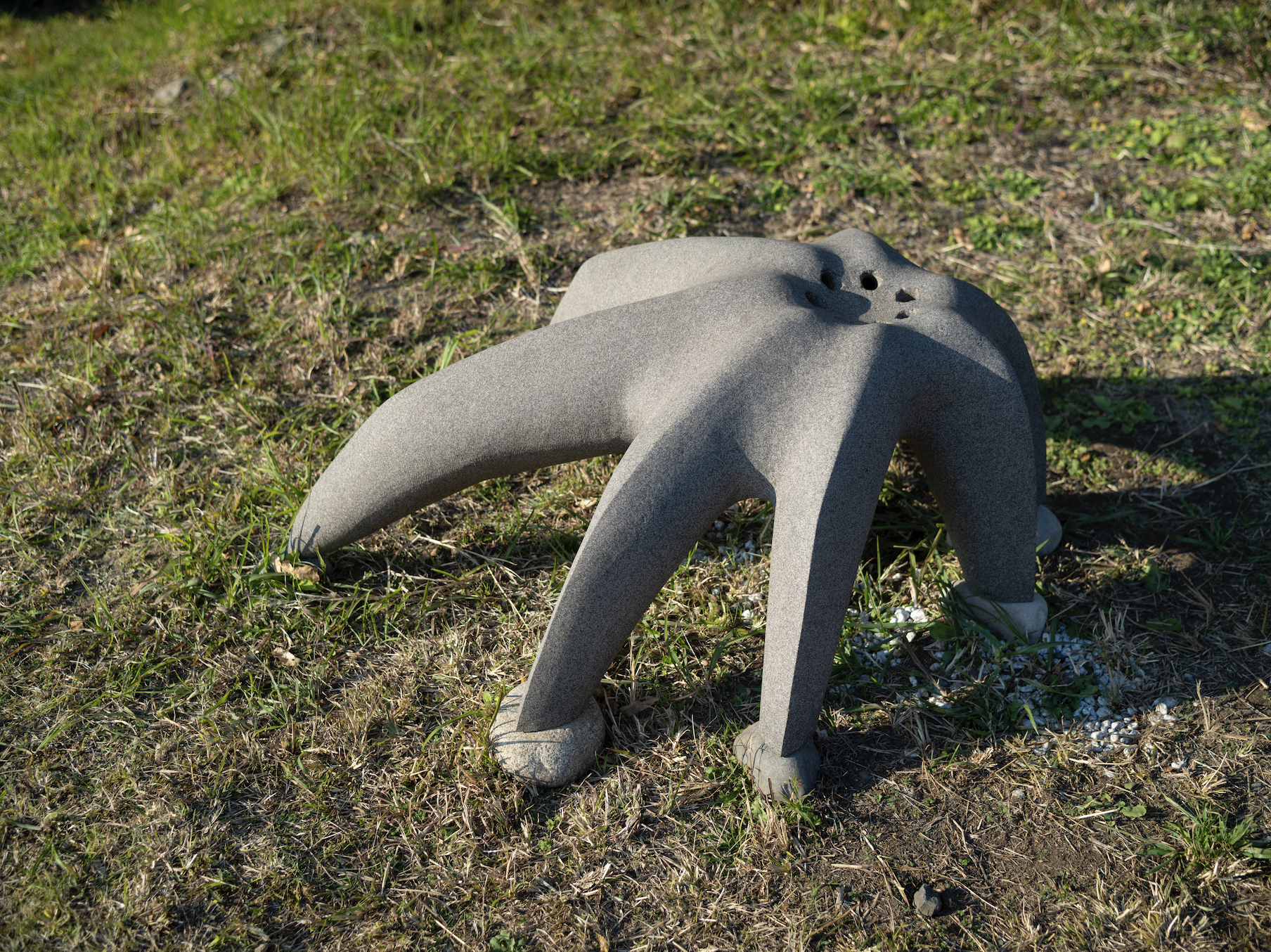
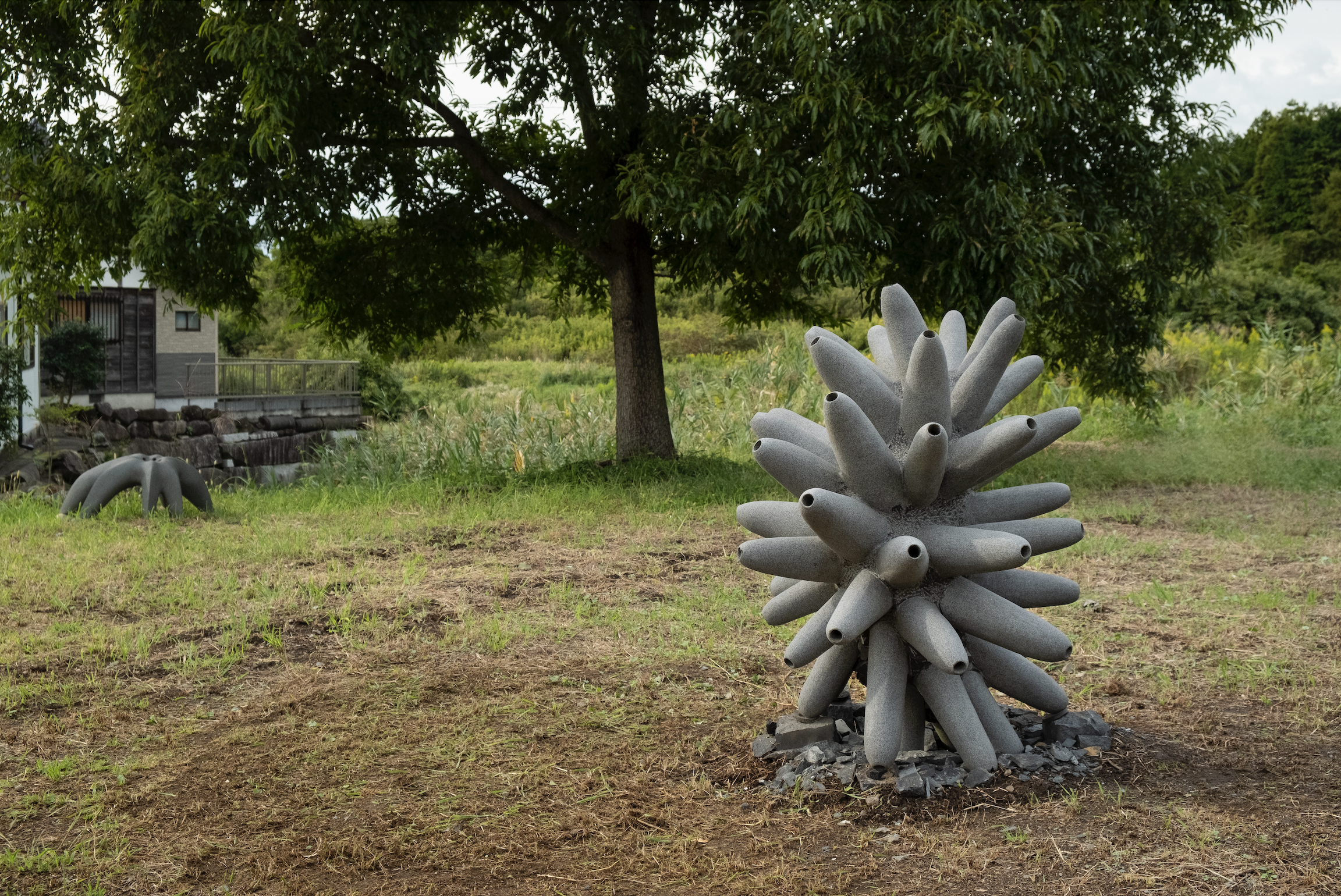
Sculpt a breath 2022
Basalt Boulder
105×105×125 (h)cm, 110×100×50 (h)cm
AMABIKI 2019
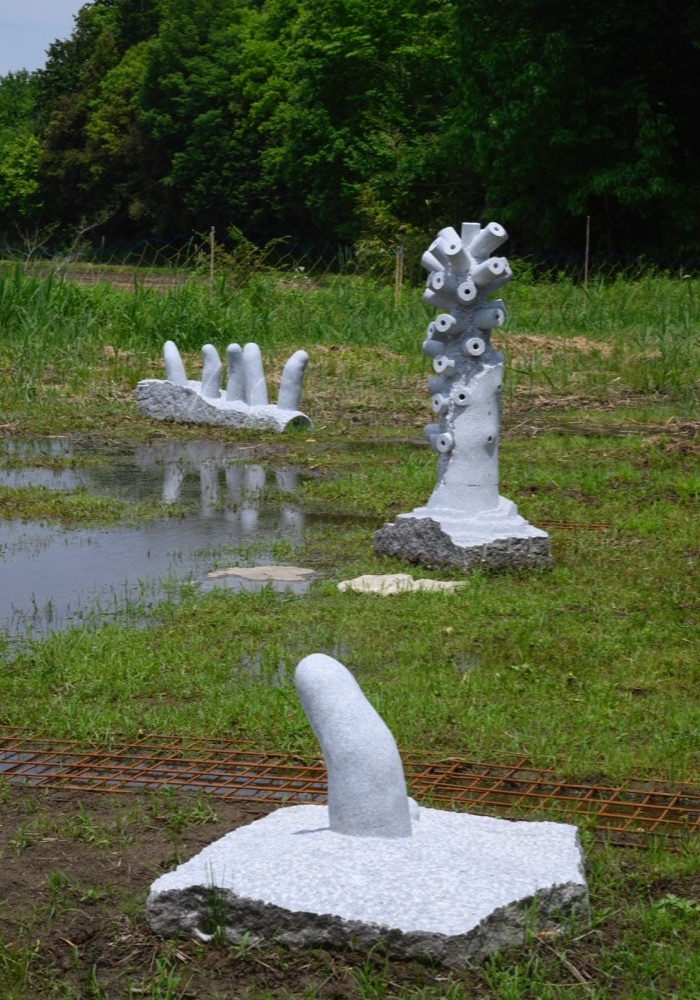
excavate a breath - 1, 2, 3
White Granite
70×55×150 (h)cm, 167×37×63 (h)cm, 95×84×55 (h)cm
AMABIKI 2015
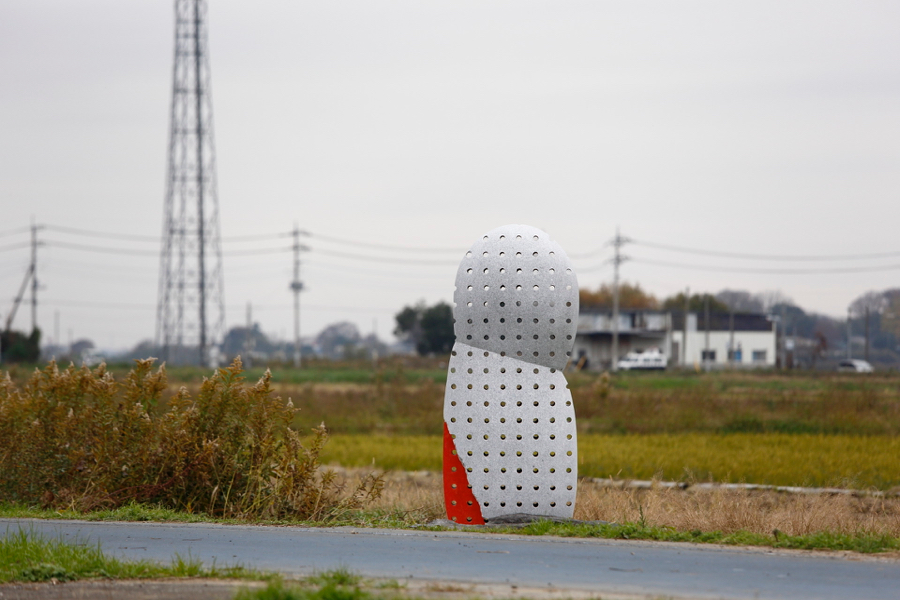
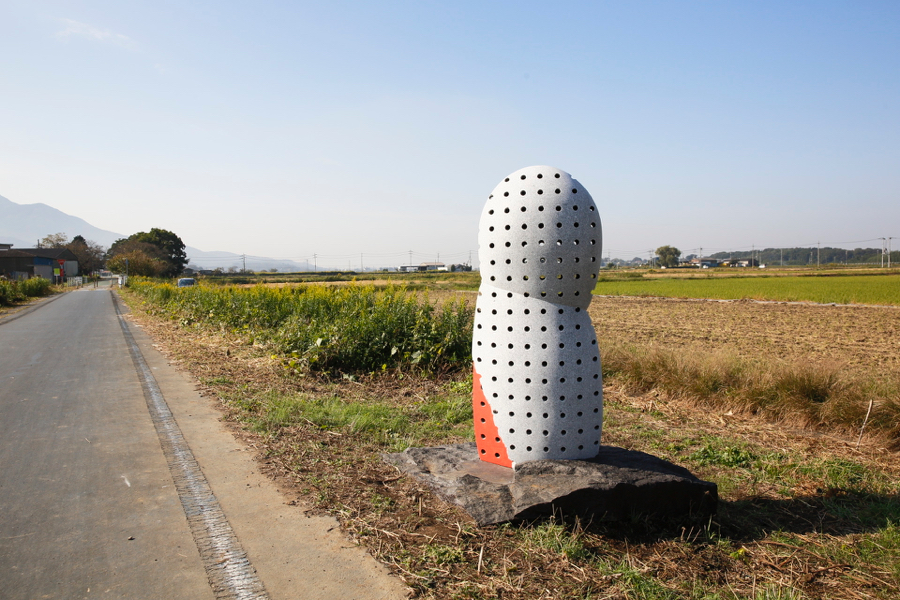
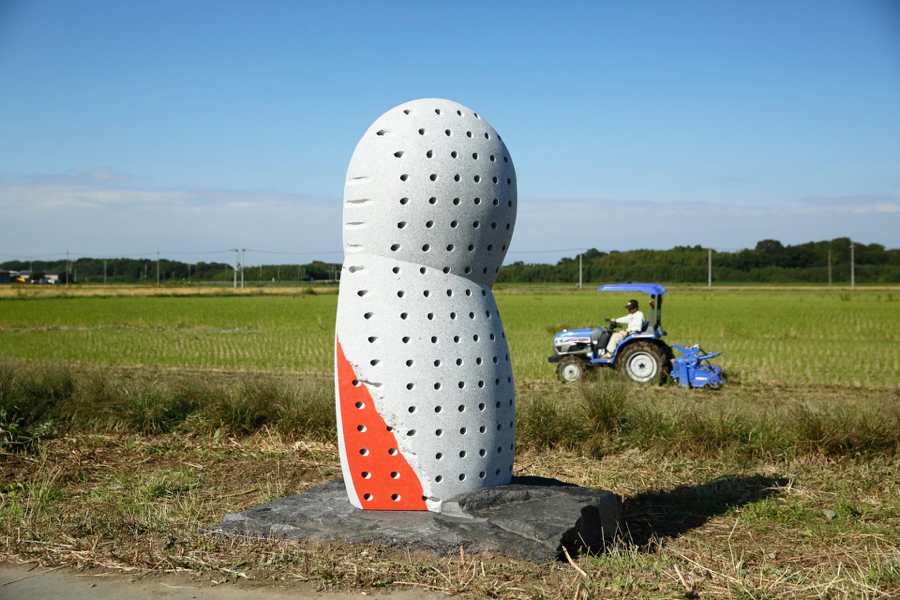
moony MARUDA
White granite, Acrylic color
86×70×170 (h)cm
AMABIKI 2013
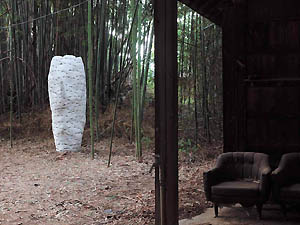
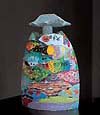
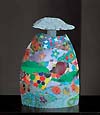
going to be a wind - from CRUST-cocoon '99
White granite
100×85×225 (h)cm
Sculpture in 2005. It was an abandoned house back then too but eight years have passed, and the shed and storehouse have both collapsed. Overgrown in weeds and bamboo, it is losing all remnants of evidence that people used to live here.
I chose this location because I had a plan to condense the energy of the local community.
However I ran into some trouble with the stone I was using for the base of the plan, and had to give up on my original idea. However, on October 20th, the Lifelong Learning Department hosted a workshop and I was able to complete a miniature version of my original idea with help from local children and their parents. is miniature version is on display in the Citrus Lobby where the AMABIKI information desk is.
AMABIKI 2011 In the midst of winter

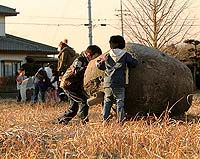
forest 2011-Planet
Boulder stone, Andesite
145×112×110 (h)cm
110×43×75 (h)cm
I use a pneumatic rock drill to make holes into the stone. Every one of those holes meets at the core of the stone. Each time a hard stone that was part of the planet is pierced by a hole, it starts to breathe. I am devoted to digging out the reborn form of the forest from inside the stone.
AMABIKI 2008
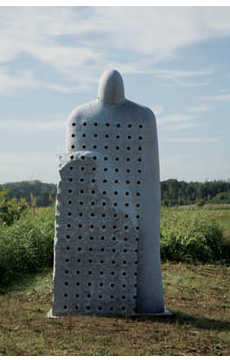








Distant horizon
White granite, Film
50×95×215 (h)cm
Getting smeared with earth on a broad landscape... I am beset with unease that I still cannot see where I am going.
Nevertheless, the one thing I don't want to lose, as someone alive today, is the bright hope within me.
AMABIKI 2006
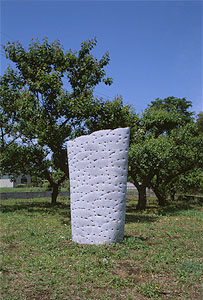
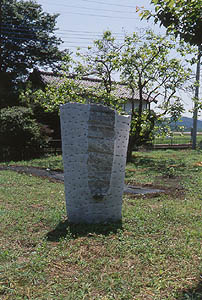
Distant water
White granite
50×100×170 (h)cm
Plum and persimmon trees grow in a walled space of an abandoned residential lot. A dried up water pipe stands alone next to a rusty pump like a dead branch. If you dig down into the ground from there, one would expect to reach a water vein, but I decided to carve upwards, looking for a distant, lost vein of water.
THE 5TH EXHIBITION OF AMABIKI VILLAGE AND SCULPTURE
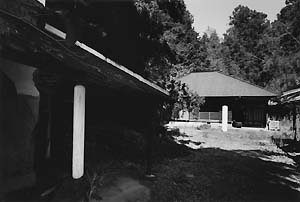

UNIT 2003 W.B.M
White granite, Black granite, Marble
18×34×200 cm (×3P)
Weeds were growing on the land, and various old utensils were scattered around the barn. The inside of the storehouse had grown into a bamboo grove.
I placed my UNIT in this space, which had lost its owner.
THE 4TH EXHIBITION OF AMABIKI VILLAGE AND SCULPTURE
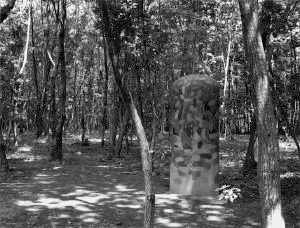
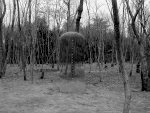
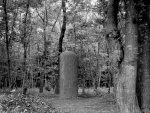
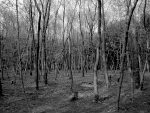
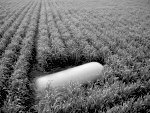
POSITION (unit, crust)
White granite, Acrylic paint
86×194.5×45.86 cm_1200 kg
86×33×220 cm_900 kg
30×25×350 cm_50 kg
Coloring sculptures and buildings has existed as an occupation since ancient times, but I believe adding arbitrary colors to surfaces as the form, material and texture of sculpture is far from making sculpture sublime by cutting away all that is superfluous.
While I am aware that these works are probably expressions of my own vagueness, in an environment that changes intensely, from winter desolation to the beginning of spring, I could not bear the obvious confrontation of the sculpture alone being an immobile and unchanging presence.
Inside me, everything I thought I had sculpted until now transformed into an extension of canvas from the first touch of the brush.
THE 3RD EXHIBITION OF AMABIKI VILLAGE AND SCULPTURE
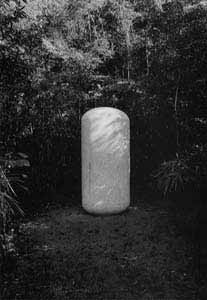
UNIT-9910 A.LB. s1/1 ri
White granite, Unhulled rice
194.5×86×45.866 cm
1000 kg
I named my piece "Unit", meaning the basic form beyond which it cannot be broken down further.
'A.LB' is an important abbreviation for the concept which led to this form. 's1/1' is the scale, meaning that this work is actual size.
'ri' is an abbreviation for the thing that is stored inside, which, on this occasion, is one bale of unhulled rice.
I do not think the space in which the unit is installed is important. Whether it's in a thicket, like this time, or plopped down in the middle of a city crowded with people, or rolling around on a family's dinner table, or standing alongside the Anne Frank house in Amsterdam, or buried in grass on the African savannah...
I could call it an object like the monolith envisioned by Stanley Kubrick.
But it's not as overpowering as the monolith.
THE 2ND EXHIBITION OF AMABIKI VILLAGE AND SCULPTURE
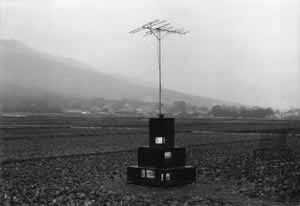
CIVILIZED ZONE
Iron, Acrylic board, Television (5set),
160×160×500 cm
400 kg
TV.camera, Famicom game, Antenna
I feel that there is something in traditional rural scenery that keeps on changing.
It's not in the visible scenery, but rather, the change is going on in the hearts of we who look at it. That phenomenon is clearly visible in children who have not yet developed the ability to defend themselves from it, but the territory of the thoughts and feelings of individual humans is constantly being invaded by a whirl of stimulus, like television images and video games that are manufactured and pumped out by an enormous information industry, under urban civilization and the dominance of economics.
This time, I attempted to express the confrontation between the rural scenery of Amabiki and the TV images that come into our living rooms.
Countless television screens alone are emitting alien light In the dead center of rice fields with darkness pressing in. They stand in the scenery of late fall, as the mountains change color, amid a blizzard which clouds the mountains, forests and houses,.
THE 1ST EXHIBITION OF AMABIKI VILLAGE AND SCULPTURE
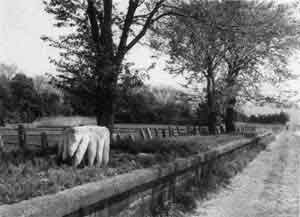
Earth's crust -5
White granite
50×80×65 (h)cm
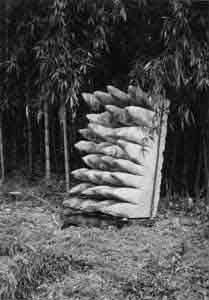
Earth's crust -7
White granite
160×90×120 (h)cm



